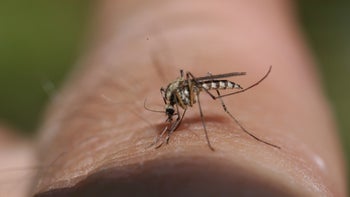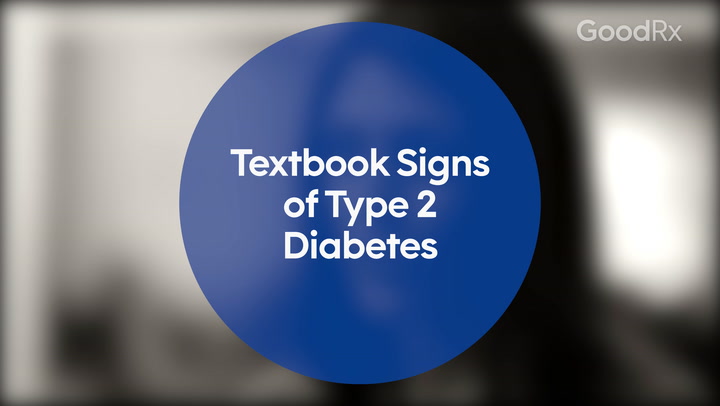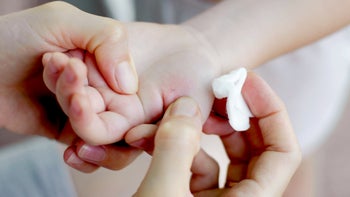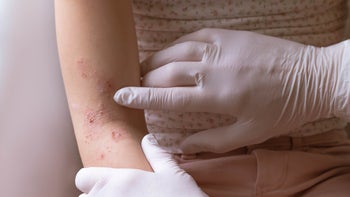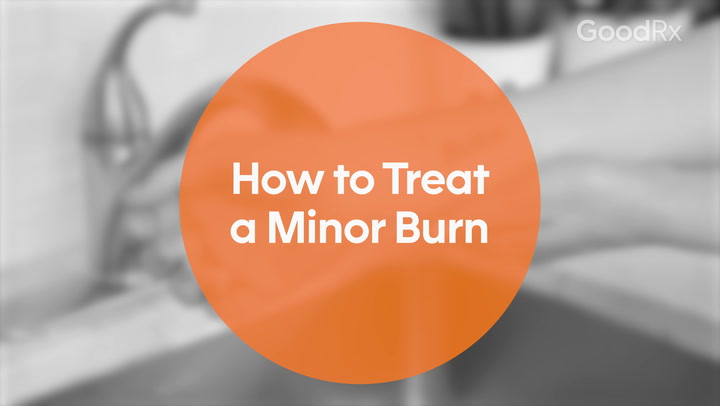
5 Common Causes of White Spots on Your Nails
Key takeaways:
White marks on your nails, or leukonychia, are usually harmless and not a cause for concern.
Nail injury is the most common cause of white spots on the nails.
Some medical conditions, like iron deficiency anemia, can also cause white marks on the nails.
Table of contents
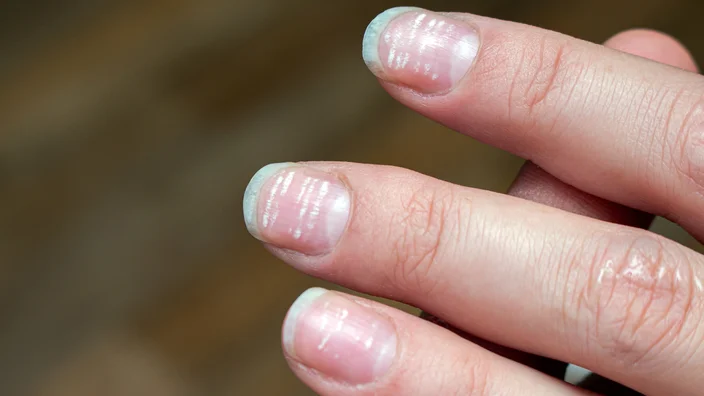
If you’ve got white marks on your nails, you’re not alone. White nails, or leukonychia, are a very common nail change. They’re so common that there are dozens of myths about why white spots, dots, or lines develop on nails.
Some of these myths are clearly far-fetched. For example, white spots don’t mean you recently told a lie or are about to receive a letter with money in it. But other popular beliefs, like the ones about vitamin deficiencies, are closer to the truth.
Here are the real reasons people get white spots on their nails — and what to do about them.
Pay less for Retin-A
Save an average of over 40% off retail prices for Retin-A (tretinoin) when you use GoodRx, whether you have insurance or not.

What is leukonychia (with pictures)?
Leukonychia is the medical term for white nails. It’s the most common type of nail discoloration. It can affect the whole nail or, more commonly, just parts of the nail.
Your nail is made up of dozens of layers of a protein called keratin. These layers are pressed together. Normally, they’re transparent, so you can see the nail bed below. That’s why your nails have a skin-colored pink or brown tinge. But if the keratin layers get separated, injured, or damaged, air gets trapped between the layers. And that makes the area look white.
There are three main types of leukonychia:
Punctate leukonychia: small, isolated white spots
Longitudinal leukonychia: bands of white that go up the length of the nail
Transverse (or striate) leukonychia: bands of white that run across the nail
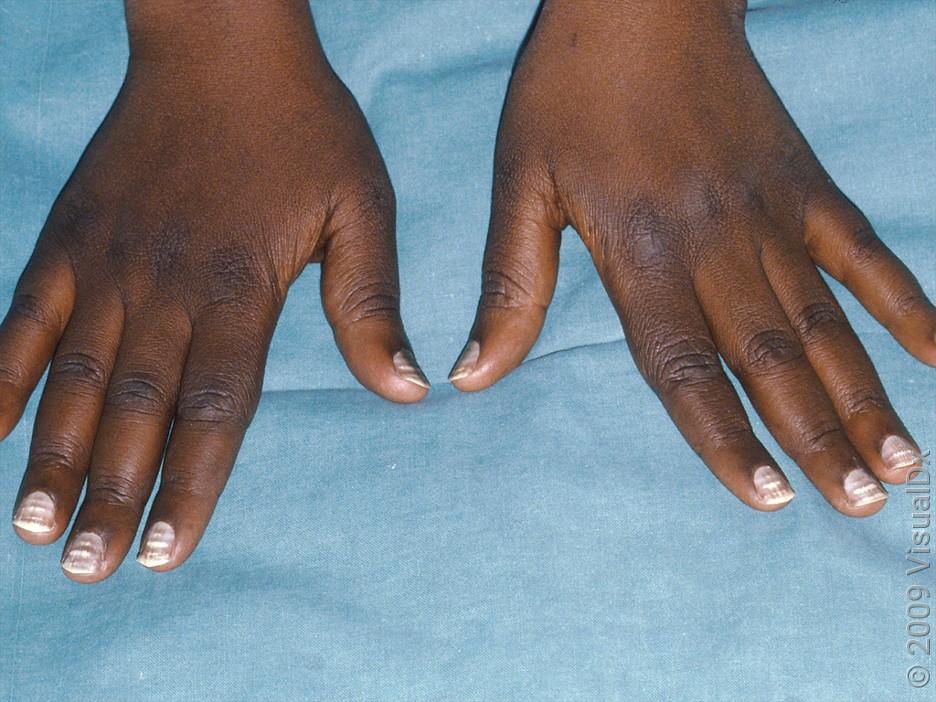
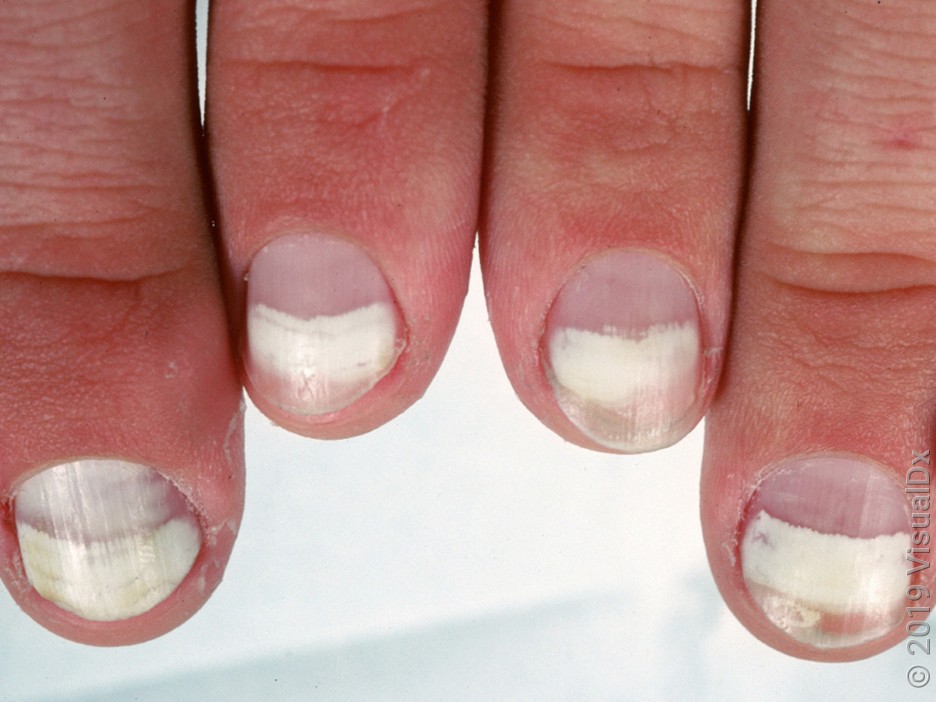
From injuries to medical conditions, there are many different causes of leukonychia. We’ll go over the four main reasons for white marks on your nails.
1. Nail trauma
Injury is the most common reason people develop white marks on their nails. Any kind of nail trauma can cause white spots on nails. Typically, this shows up as white spots (punctate leukonychia) rather than white lines.
Nail trauma can be something major, like slamming your finger in a car door. If the nail separates from the nail bed, then the whole nail might turn white.
But even minor trauma or injury to your nail can lead to white spots. Nail biting, for example, is a common habit that causes repeated injury to the nail. And it’s a major cause of white marks on nails.
Also, nail trauma isn’t always physical. Certain nail polishes and acrylic nails can cause a chemical trauma. Chemical trauma can also cause white marks on nails.
2. Medical conditions
Certain medical conditions can cause nails to appear white. With this cause, people usually develop white bands rather than individual spots.
Beyond vitamin deficiencies: Here’s what else your nails can tell you about your health.
Struggling with splitting nails? Our guide can help you fix split nails for good.
Do your nails seem weaker than usual? Here are common causes of brittle nails.
One common nail change that can be a sign of a medical problem is called Terry’s nails (named after the doctor who first observed and described this condition). When this happens, most of the nail appears white except for a thin strip of darkening toward the tip. This nail change has been linked with health conditions such as:
Chronic kidney disease
Certain skin conditions, such as psoriasis and alopecia areata, can also cause white spots on the nail.
Read more like this
Explore these related articles, suggested for readers like you.
3. Vitamin deficiencies
White spots on your nails can be a sign of vitamin deficiencies. In particular, selenium and zinc deficiencies can cause white spots or even turn whole sections of nail white. But this only happens with severe vitamin deficiencies, which is extremely rare among people eating a typical diet in the U.S.
4. Fungal infections
A fungal nail infection (onychomycosis) is a common cause of white spots on nails. Most nail fungi grow within the nail and turn it brown or yellow. But some types of fungus grow on top of the nail and cause white spots. Nail fungus is more common on toenails, but it’s possible in fingernails too.
Keep a close eye on your nails. Early detection and treatment of nail fungus can help you avoid more serious symptoms later, like cracked or crumbly nails. Some signs you should see your primary care provider for treatment are if you:
Have a skin fungus infection, like athlete’s foot or ringworm
Notice new spots on your nails
5. Medications
Medications can also cause white spots on the nails. When medications cause leukonychia, this usually shows up as white lines that run across the nails.
Here are some common medications that can cause white nail changes:
How do you get rid of white spots on your nails?
Getting rid of white spots on your nails depends on the underlying cause. Treating the underlying cause, like fungus or a health condition, will prevent new spots from forming. But you’ll need to wait for the nails to grow out to see old marks resolve. White marks caused by nail injury will also fade as your nail grows out.
Proper nail care can prevent new spots from forming. Follow these simple tips to protect your nails:
Limit or avoid artificial nails and gel manicures.
Keep nails trimmed and filed.
Wear gloves if you do a lot of wet work (like washing dishes).
Keep your hands and nails moisturized.
When should you see a healthcare professional about white spots on your nails?
If you have a few isolated white spots on your nails, the most likely cause is nail injury. But it’s time to see a healthcare professional in these cases:
You have white lines along your nail.
Your entire nail looks white.
You notice other nail changes, like pits or nail splitting.
Your healthcare team can help you figure out what’s causing your nail changes. They may be able to pinpoint a cause based on your history. But they may also recommend blood tests or even a nail biopsy to help figure out what’s causing the white spots.
Frequently asked questions
A dark spot on the fingernail could be a sign of a subungual hematoma (blood under the nail). Dark spots can also be a sign of a medical condition or melanoma (skin cancer). It’s safest to have a dermatologist look at any new dark spots on your fingernails to make sure they’re not a sign of a serious condition.
Thyroid conditions can cause nail changes. That’s true for both overactive thyroid (hyperthyroidism) and underactive thyroid (hypothyroidism). Thyroid conditions can make the nail separate from the nail bed. This can make the nail look white. This causes a large part or the entire nail to look white.
Some people notice white spots on their nails during pregnancy. This is usually caused by minor nail injury. It may also be a sign of vitamin deficiency since the body needs more nutrients during pregnancy.
The bottom line
Nail injury is the most common cause of white marks on nails. These marks are usually harmless. But there are other more serious causes that may need treatment. White nail spots need to grow out. There’s no way to quickly get rid of them. And, if your nail changes are due to a fungal infection or an underlying medical condition, getting the right treatment will prevent further nail damage.
Why trust our experts?


Images used with permission from VisualDx (www.visualdx.com).
References
American Academy of Dermatology Association. (n.d.). Thyroid disease: A checklist of skin, hair, and nail changes.
Holzberg, M. (1990). Nails. Clinical Methods: The History, Physical, and Laboratory Examinations. Butterworths.
Iorizzo, M., et al. (2022). Leukonychia: What can white nails tell us? American Journal of Clinical Dermatology.
Mardiros, L., et al. (2022). White nail. DermNet.
ScienceDirect. (n.d.). Mees’ lines.
Shirwaikar, A. A., et al. (2008). Treatment of onychomycosis: An update. Indian Journal of Pharmaceutical Sciences.
Witkowska, A. B., et al. (2017). Terry’s nails: A sign of systemic disease. Indian Journal of Dermatology.







